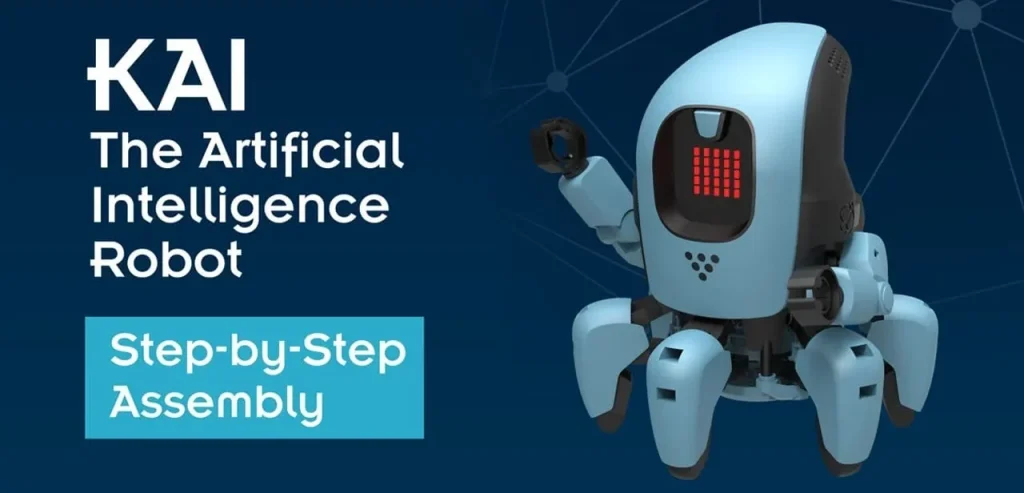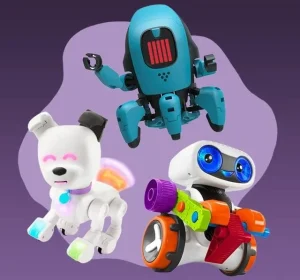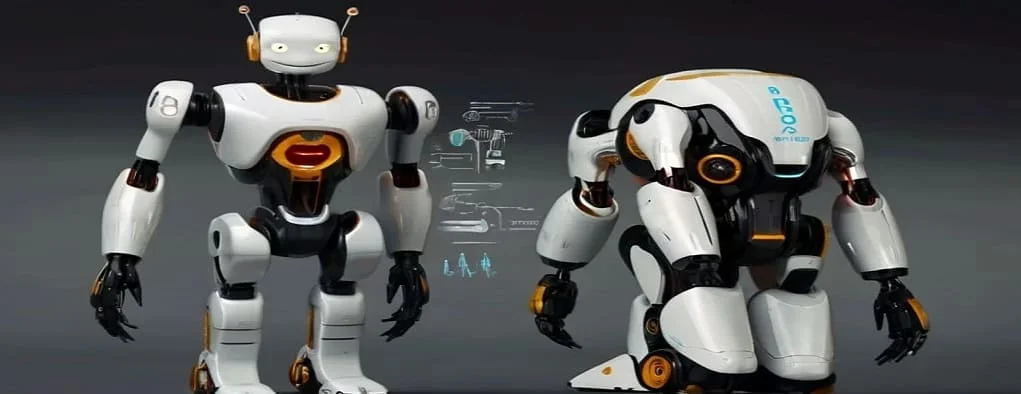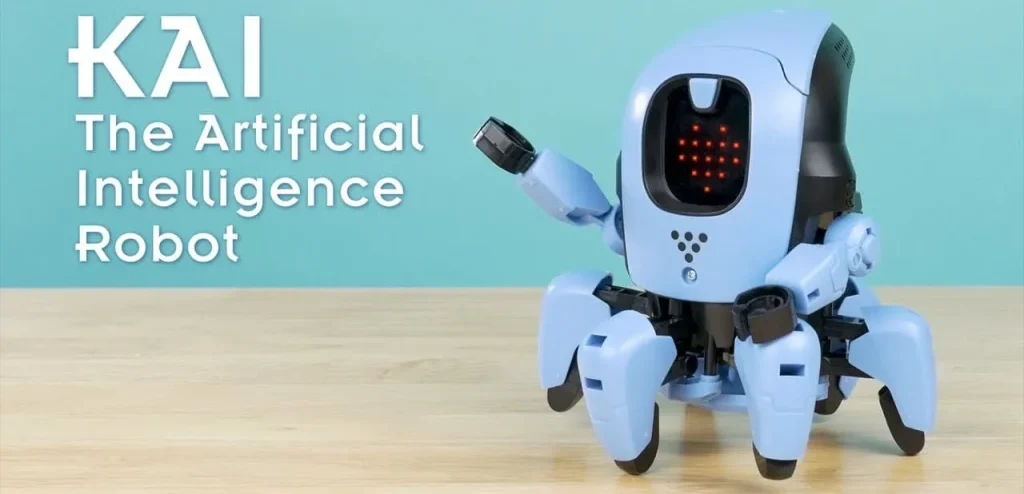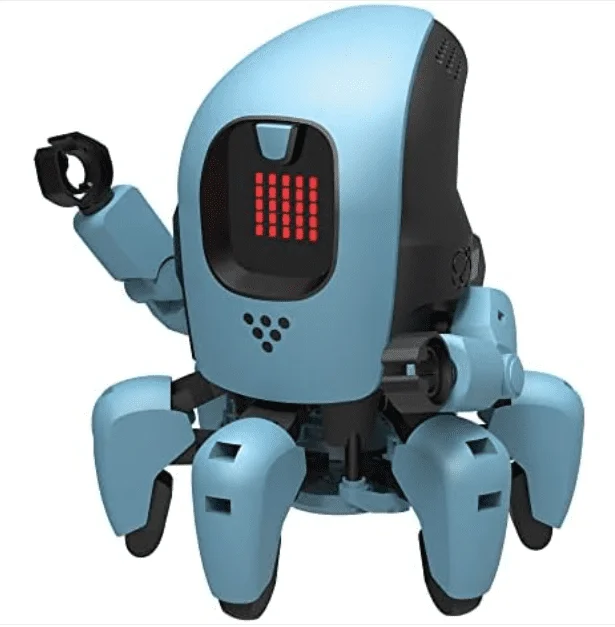
Introduction: Building the Future Today
In today’s rapidly evolving technological landscape, artificial intelligence (AI) and robotics have emerged as pivotal fields shaping the future. The convergence of these disciplines has led to remarkable innovations, one of which is KAI – Kosmos Artificial Intelligence. KAI represents a groundbreaking leap in the realm of intelligent robotics, offering enthusiasts an immersive experience in machine learning and programming. In this article, we delve into the exciting world of KAI, exploring its capabilities, functionalities, and the endless possibilities it presents for the future.
Understanding KAI: The Intelligent Six-Legged Robot
Unveiling KAI: An Overview
KAI stands as a testament to the ingenuity of modern engineering and AI. It is a six-legged robot equipped with advanced machine learning capabilities, allowing it to interact with its environment based on gestures and sounds.
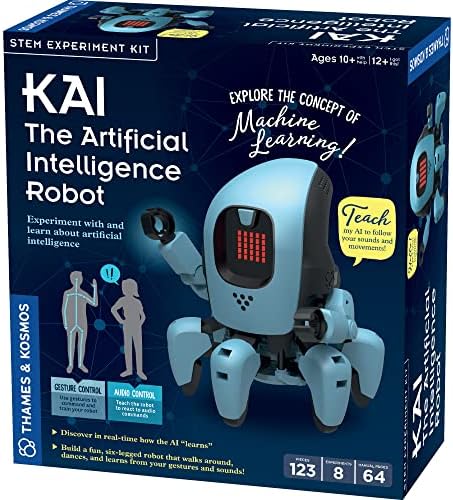
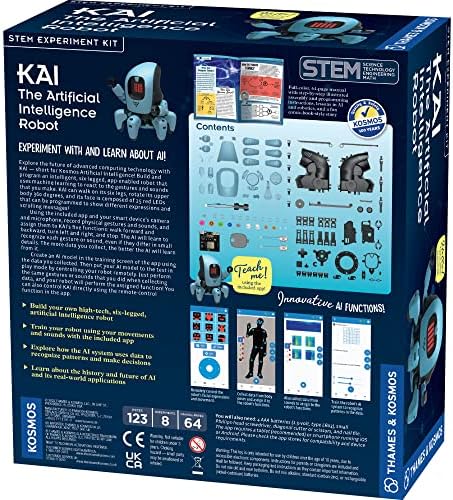





Price:
(as of Mar 27, 2024 02:47:48 UTC – Details)
The Essence of Machine Learning
At the heart of KAI lies the essence of machine learning – the process through which computers discern patterns, learn from data, and make predictions. This fundamental aspect enables KAI to adapt and respond intelligently to stimuli, heralding a new era in interactive robotics.
Building and Programming KAI: A Journey into Robotics
Step 1: Interactive Setup
The journey with KAI begins with an interactive setup process. Users utilize the accompanying app and their smart device’s camera and microphone to record gestures and sounds, assigning them to KAI’s various functions such as walking, turning, and stopping.
Step 2: Data Collection and Model Training
Central to KAI’s functionality is the iterative process of data collection and model training. As users interact with KAI, the AI learns to recognize and interpret gestures and sounds, continually refining its capabilities with each interaction.
Step 3: Testing and Validation
Once the AI model is trained, users can put KAI to the test in play mode. By replicating the recorded gestures or sounds, users can observe KAI’s responses, validating the effectiveness of the trained model and fine-tuning as necessary.
Exploring KAI’s Capabilities: From Movement to Expression
Mechanical Marvel: The Six-Legged Design
KAI’s mechanical design is nothing short of marvel. With six legs and a rotatable upper body, it boasts unparalleled agility and maneuverability, allowing it to navigate diverse terrains with ease.
Expressive Interface: The LED Display
Beyond its physical prowess, KAI features a captivating LED display comprising 25 red LEDs. This display serves as KAI’s interface, enabling it to convey emotions and messages through dynamic expressions and scrolling text.
Unlocking the Potential: Educational Value of KAI
Learning through Play: The Instruction Manual
Accompanying KAI is a comprehensive 64-page manual, meticulously crafted to guide users through the assembly, programming, and operation of KAI. Beyond technicalities, the manual incorporates educational content on AI and robotics, fostering a deeper understanding of these fields.
Engaging Narratives: Storytelling with KAI
Adding to the educational experience is a captivating comic-book-style story that brings KAI to life. Through engaging narratives, users embark on a journey into the world of AI, exploring its history, applications, and future implications.
Embracing the Future: The Impact of KAI
Empowering the Innovators of Tomorrow
KAI represents more than just a robotic toy; it symbolizes a gateway to the future. By engaging with KAI, users are empowered to explore the realms of AI and robotics, nurturing curiosity, creativity, and problem-solving skills essential for the innovators of tomorrow.
Conclusion: Beyond Boundaries, Into the Future
In conclusion, KAI epitomizes the fusion of technology and imagination, offering a glimpse into the future of intelligent robotics. With its interactive features, educational value, and boundless potential, KAI transcends mere entertainment, paving the way for a generation of technologically adept individuals poised to shape the world of tomorrow.
FAQs (Frequently Asked Questions)
- What age group is KAI suitable for?KAI is designed for children aged 10 and above, with supervision recommended for younger users. However, its engaging content and educational value make it suitable for users of all ages.
- Can KAI be programmed for advanced functionalities?Absolutely! While KAI offers intuitive programming for beginners, advanced users can delve into its open-source platform to unlock limitless possibilities in robotics and AI.
- Is KAI compatible with all devices?KAI’s app is compatible with most iOS and Android devices. However, we recommend checking the app stores for compatibility and device requirements before installation.
- Does KAI require constant internet connectivity?No, KAI operates independently once the initial setup is complete. However, internet connectivity may be required for software updates and accessing additional resources.
- Is KAI suitable for educational settings?Yes, KAI serves as an invaluable tool for educators seeking to integrate STEM (Science, Technology, Engineering, and Mathematics) concepts into their curriculum, fostering hands-on learning experiences in AI and robotics.
(as of Mar 27, 2024 02:47:48 UTC – Details)




